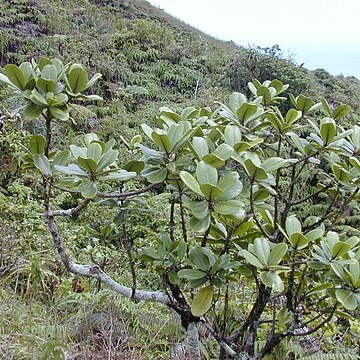Shrubs, trees, rarely scandent, evergreen, usually dioecious or sometimes monoclinous or andromonoecious. Leaves opposite [or whorled], digitately 3-foliolate or 1-foliolate. Inflorescences axillary or basal to leaves, cymulose to thyrsiform [or reduced to solitary flowers]. Sepals 4, connate at base or to nearly their full length. Petals 4, valvate or narrowly imbricate in bud. Stamens 4 or 8 [or 4-8], rudimentary in female flowers. Disk pulvinate to annular to cup-shaped. Gynoecium 4-carpelled, rudimentary or lacking in male flowers; ovaries connate at base, otherwise contiguous [or connate up to their full length]; ovules [1 or] 2 per locule; style apical or subapical, of 4 contiguous, coherent, or connate stylar elements; stigma usually punctiform, capitellate, or capitate. Fruit of 1-4 basally connate follicles [or grading to a syncarpous 4-loculed loculicidal capsule]; exocarp dry to fleshy; endocarp cartilaginous. Seeds remaining attached in dehisced fruit; seed coat with thick inner layer of dense black sclerenchyma and spongy outer layer bounded externally by a shiny black pellicle; endosperm copious; embryo straight or slightly curved; cotyledons elliptic, flattened; hypocotyl superior.
Fls 4-merous, perfect to unisexual, in cymes or panicles, occ. solitary. Sepals minute, petals with inflexed apices; stamens 8, at base of disk, filaments subulate. Ovary 4-lobed and 4-loculed; ovules us. 2 per locule; styles 4, often coalescent; stigma 4-lobed. Cocci 4, each 1-seeded; testa shining, endocarp cartilaginous. Trees or shrubs with gland-dotted lvs. Some 20 spp. of tropical Asia to Australia, the N.Z. spp. endemic.

